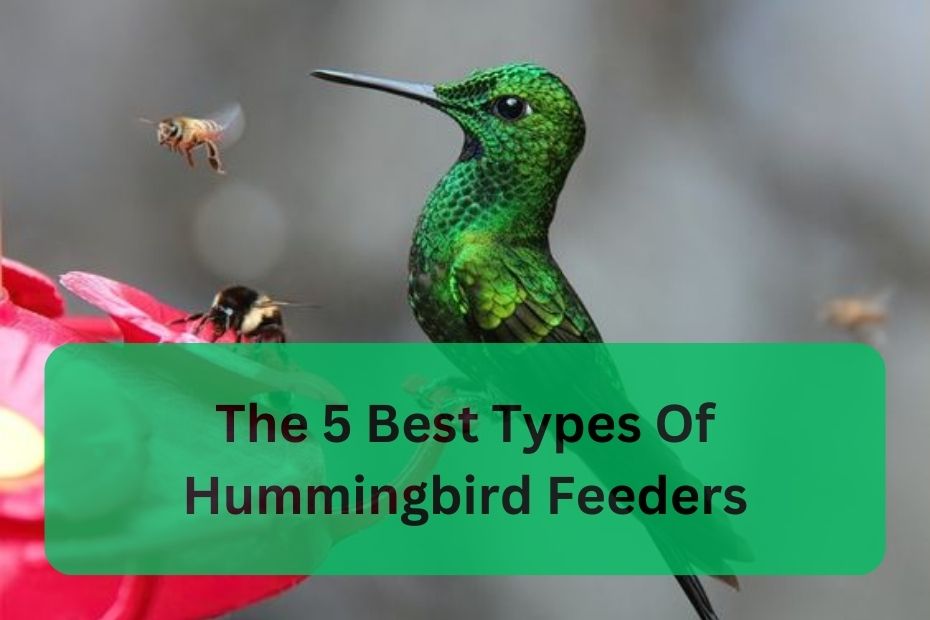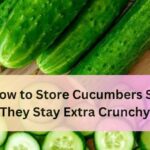The 5 Best Types Of Hummingbird Feeders
Hummingbirds are enchanting creatures that bring joy and beauty to any backyard. With their vibrant colors and graceful flight, attracting hummingbirds to your garden can be a delightful experience. However, to entice these tiny marvels, it’s essential to provide them with the right feeder. In this article, we’ll explore the five best types of hummingbird feeders to help you choose the perfect one for your backyard oasis.
Introduction
Fascination with hummingbirds: Hummingbirds captivate our imagination with their iridescent plumage and aerial acrobatics. Watching these tiny birds dart and hover among flowers is a source of endless fascination for bird enthusiasts and nature lovers alike.
Importance of selecting the right feeder: To attract hummingbirds to your yard, it’s crucial to provide them with a feeder that meets their needs. The right feeder not only provides a convenient source of nectar but also ensures the safety and comfort of these delicate creatures.
Types of Hummingbird Feeders
Perks of different feeder designs: Hummingbird feeders come in various designs, each with its own set of features and benefits. Understanding the differences between these feeders can help you make an informed decision when selecting the best one for your garden.
Factors to consider when choosing a feeder: When choosing a hummingbird feeder, consider factors such as capacity, ease of cleaning, and resistance to bees and ants. Additionally, think about your aesthetic preferences and the layout of your garden.
Tube Feeders
Description of tube feeders: Tube feeders consist of a vertical reservoir with feeding ports where hummingbirds can access the nectar. These feeders often feature perches for the birds to rest while feeding.
Pros and cons of tube feeders: Tube feeders are popular for their simplicity and effectiveness at attracting hummingbirds. However, they can be challenging to clean thoroughly, and some models may be prone to leaking.
Dish or Saucer Feeders
Overview of dish or saucer feeders: Dish or saucer feeders feature a shallow basin filled with nectar, making it easy for hummingbirds to access the sweet liquid. These feeders often have a larger surface area, allowing multiple birds to feed simultaneously.
Advantages and disadvantages of dish feeders: Dish feeders are easy to clean and refill, making them a convenient option for busy bird enthusiasts. However, they may be more susceptible to contamination from rainwater and debris.
Window Feeders
Explanation of window feeders: Window feeders attach directly to a windowpane, providing an up-close view of hummingbirds in action. These feeders typically feature small reservoirs with feeding ports and suction cups for easy mounting.
Benefits and drawbacks of window feeders: Window feeders offer an unparalleled opportunity to observe hummingbirds at close range from the comfort of your home. However, they may require frequent cleaning to prevent glass smudges and may be less attractive to hummingbirds in busy or noisy areas.
Bottle Feeders
Details about bottle feeders: Bottle feeders consist of a plastic or glass bottle filled with nectar and inverted into a base with feeding ports. These feeders often have perches and decorative elements to attract hummingbirds.
Pros and cons of bottle feeders: Bottle feeders are visually appealing and easy to refill, making them a popular choice for many bird enthusiasts. However, they may be more prone to dripping or leaking, especially in hot weather.
Decorative Feeders
Introduction to decorative feeders: Decorative feeders combine functionality with aesthetic appeal, adding a touch of beauty to any garden or patio. These feeders often feature intricate designs and vibrant colors to attract both hummingbirds and human admirers.
Aesthetic appeal and functionality of decorative feeders: Decorative feeders come in a variety of styles, from classic to contemporary, allowing you to choose one that complements your outdoor decor. While they may be more expensive than basic feeders, their artistic craftsmanship and durability make them a worthwhile investment.
Choosing the Right Feeder for You
Considerations for selecting the best feeder for your needs: When choosing a hummingbird feeder, consider factors such as your budget, maintenance preferences, and the size of your garden. Take the time to research different feeder options and choose one that meets your specific requirements.
Matching feeder features with your preferences and environment: Whether you prefer a simple and functional feeder or a decorative piece of garden art, there’s a hummingbird feeder to suit your taste. Consider the unique characteristics of each feeder type and select one that aligns with your personal style and the needs of your local hummingbird population.
Conclusion
In conclusion, selecting the right hummingbird feeder is essential for attracting these delightful birds to your garden. Whether you opt for a tube feeder, dish feeder, window feeder, bottle feeder, or decorative feeder, each type offers its own unique benefits and features. By choosing a feeder that meets your needs and preferences, you can create an inviting habitat for hummingbirds and enjoy hours of entertainment watching them feed and frolic in your garden.
FAQs:
1. How often should I clean my hummingbird feeder? It’s essential to clean your hummingbird feeder regularly to prevent mold and bacteria buildup. Clean the feeder with hot, soapy water every 3-5 days, and rinse it thoroughly before refilling with fresh nectar.
2. What is the best location for a hummingbird feeder? Place your hummingbird feeder in a shaded area away from direct sunlight to prevent the nectar from spoiling too quickly. Additionally, position the feeder near flowers or shrubs to provide natural perches and shelter for visiting hummingbirds.
3. How can I deter bees and ants from my hummingbird feeder? To deter bees and ants, consider using feeders with built-in bee guards or ant moats. Alternatively, apply a thin layer of cooking oil or petroleum jelly to the feeder’s hanging wire or pole to create a barrier that insects cannot cross.
4. Can I make my own hummingbird nectar? Yes, you can make your own hummingbird nectar by mixing one part granulated sugar with four parts water. Boil the mixture for 1-2 minutes to dissolve the sugar, then let it cool before filling your feeder. Avoid using honey, artificial sweeteners, or red food coloring, as these can be harmful to hummingbirds.
5. How do I attract more hummingbirds to my garden? In addition to providing feeders filled with fresh nectar, consider planting a variety of nectar-rich flowers, shrubs, and trees to create a hummingbird-friendly habitat. Providing water sources such as birdbaths or misters can also attract hummingbirds to your garden.
| Home | Click Here |
| Hummingbird | Click Here |




